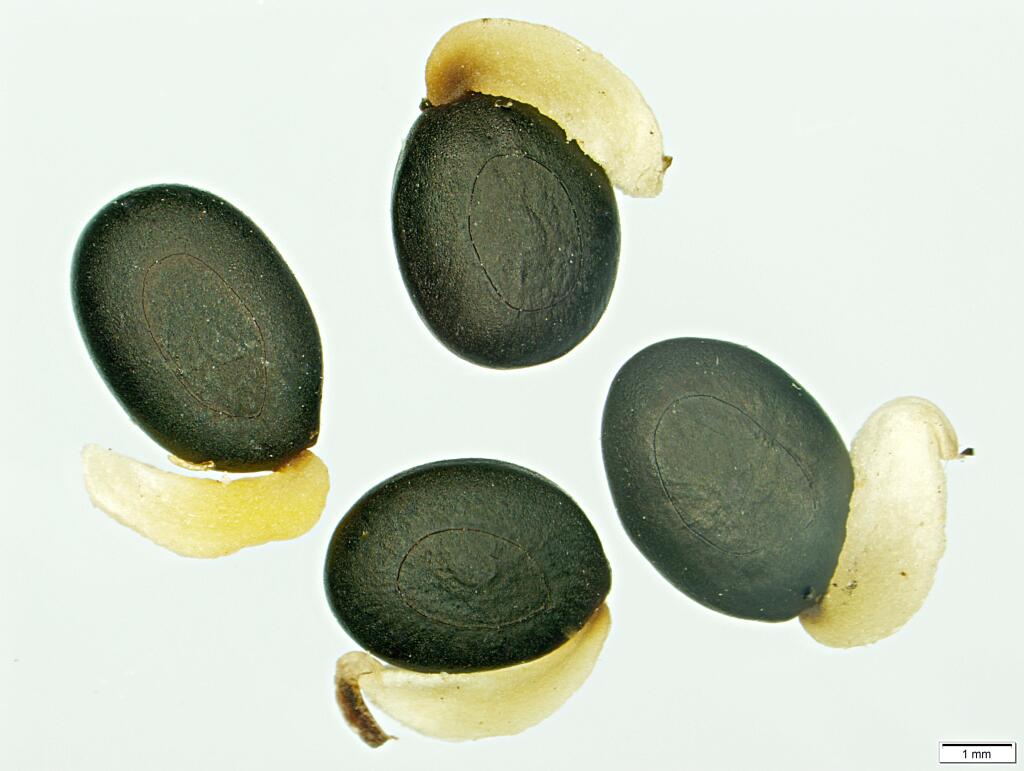Acacia sporadica
N.G.Walsh Dwarf Hickory-wattleShrub to c. 3 m high, largely reproducing by root suckers; brachlets glabrous. Phyllodes obovate to elliptic, 2.5–6.5 cm long, 8–32 mm wide, usually slightly asymmetric, glaucous, obtuse, sometimes with a short point; faintly to moderately prominently pinnately veined, midrib and marginal veins very prominent; gland 2–20 mm above pulvinus, margin often shallowly indented at gland which is not obviously connected to midrib by a lateral vein. Racemes sometimes in panicles; rachis 1.5–7 cm long, glabrous; peduncles 3–6 mm long, glabrous; heads globular, 15–25-flowered, bright lemon-yellow. Flowers 5-merous; sepals united. Pods to 9 cm long, 10–15 mm wide, thinly coriaceous; seeds transverse, oblong to elliptic, 4–5 mm long, slightly shiny, black, funicle pale brown, aril clavate. Flowers Jul.–Sep.
VRiv, GipP, Gold, CVU, HNF. Endemic to Victoria where it is known from 3 disjunct locations (Taradale, Howqua, and Carboor). At each of these sites plants occur in grassy, dry Eucalyptus woodland or forest on shallow soils.
This species was previously included in A. penninervis, from which it can be distinguished by its shorter, often root-suckering growth-habit, shorter, relatively broader, glaucous phyllodes with glands not connected to the midrib by a prominent vein, bright yellow flowers that are produced in later winter/early spring (A. penninervis has cream or white flowers produced in summer), and smaller, transverse seeds.
 Spinning
Spinning
